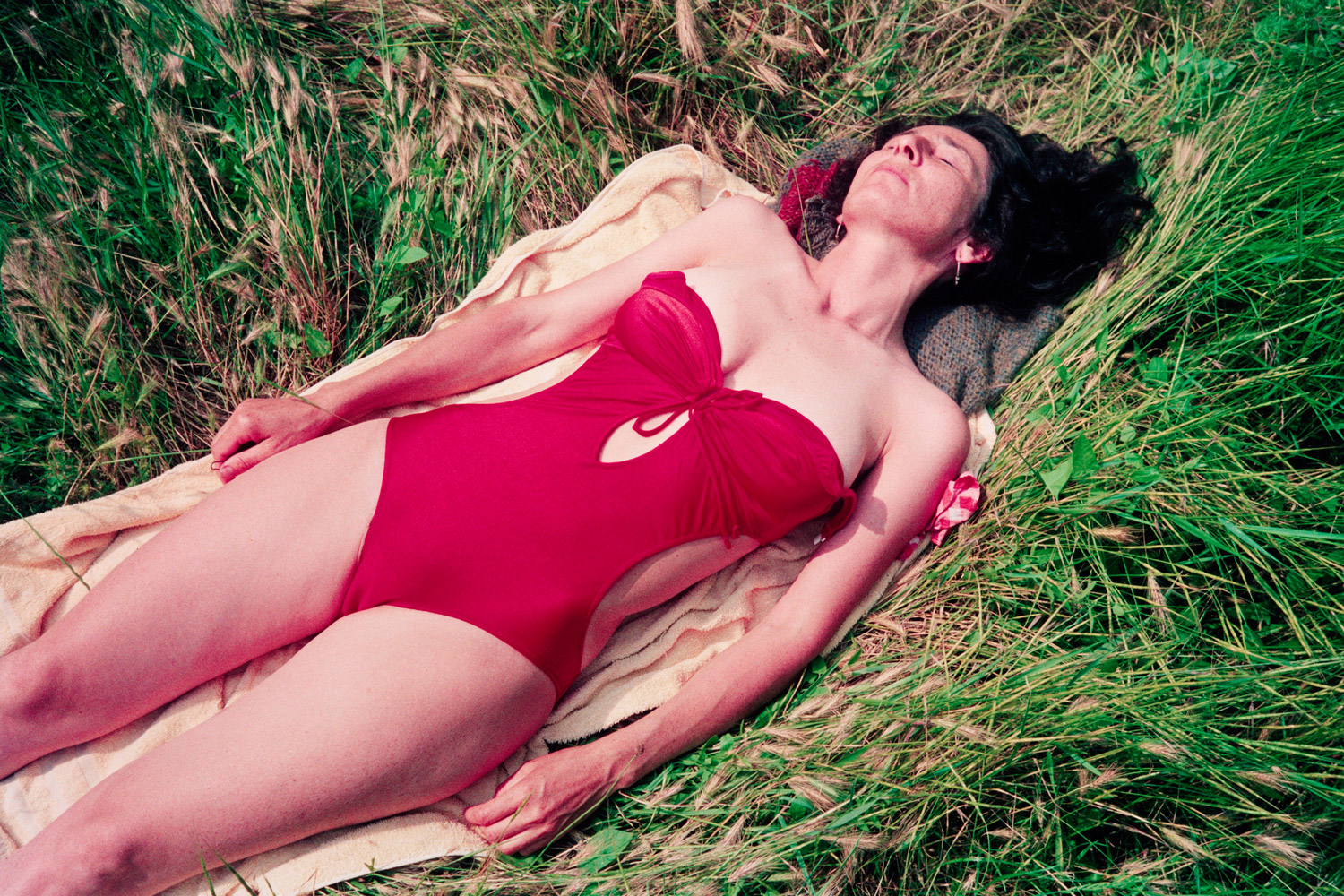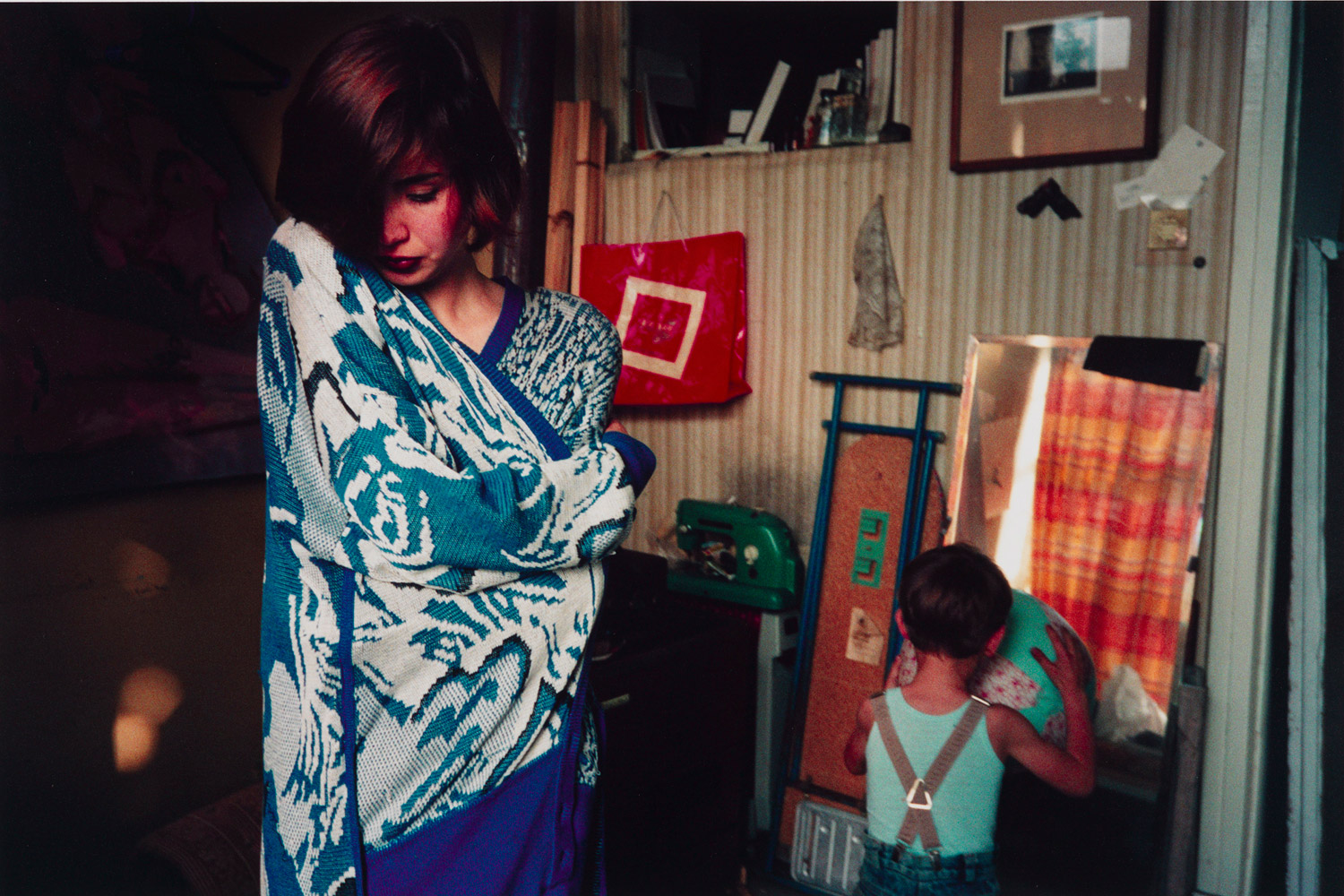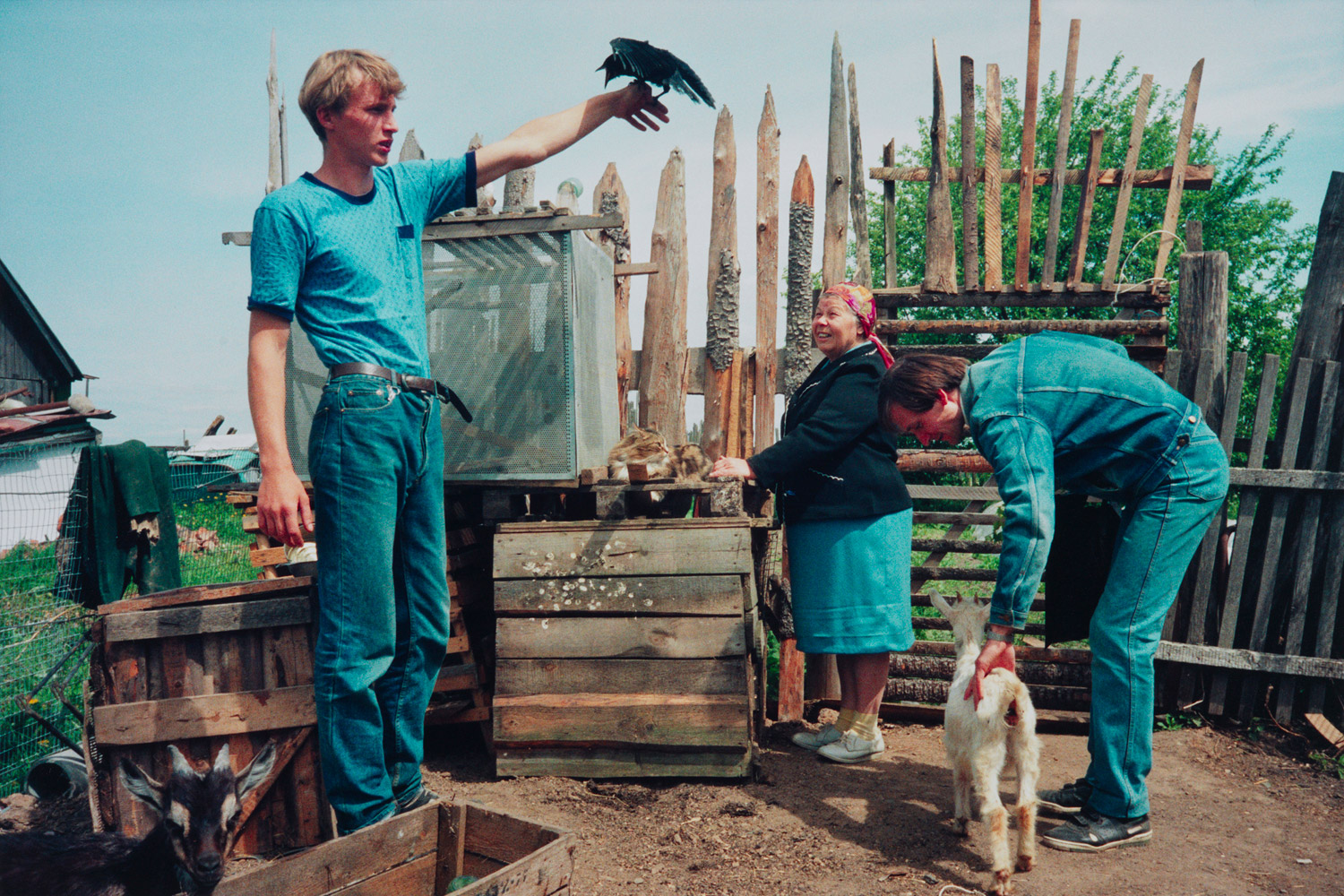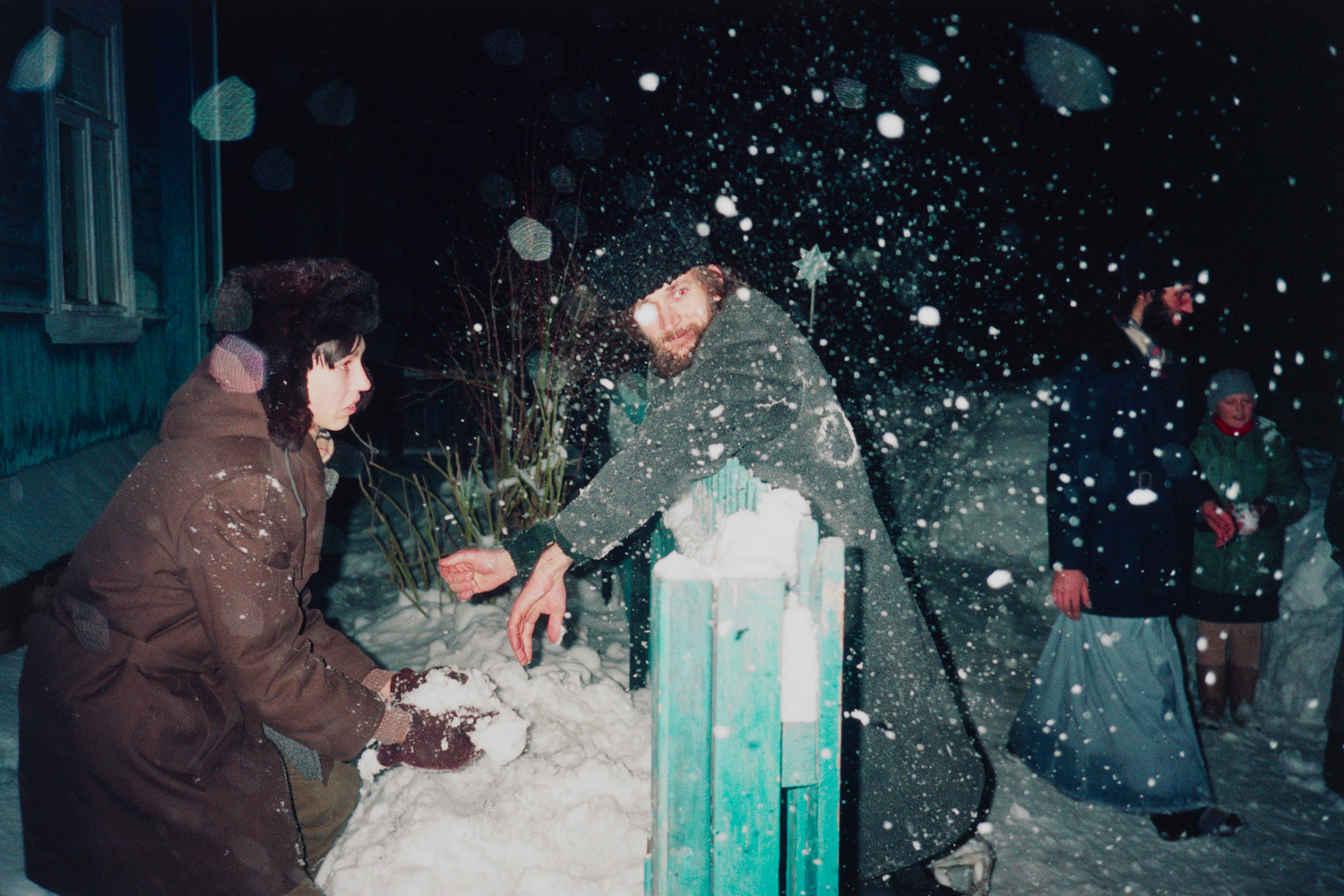
The thread that links much of the Dutch photographer Bertien van Manen’s work is her portrayal of the seemingly small, undramatic moments of everyday life.
It might be a photograph of friends sitting and sharing a drink or a deceptively simple photograph of a family snapshot sitting on a bureau, but the weight of much of her imagery lays in the perception of a connection her subjects. Van Manen’s professional beginnings were in fashion but after a photographer friend introduced her to the photographs of Robert Frank and other artists, she pursued a more personal direction with her work. “Both Robert Frank and Nan Goldin have inspired me, especially the directness and closeness to the subject they have. I have to like the people I photograph,” she has said. The seemingly casual language of her photographs stems from her use of automatic, non-professional cameras. “Traveling with expensive Leicas or Nikons in Russia at that time was asking for trouble,” she says. “They considered my cameras as toys… and they did not feel threatened by them, they considered me as a tourist or friend, who liked to take pictures.” What might be seen at first to be “flaws” to the images—a light leak bleeding in from an edge, imperfect focusing or flash burn from the on-camera flash—give way to the perception of Manen’s impulses to grab at what she sees before her, physically hold it, or more accurately as felt in the pictures, to embrace it.
For her first book, A Hundred Summers A Hundred Winters, published in 1994, van Manen traveled all over the former Soviet Union for more than three years photographing daily life. “I did not focus on poverty,” she says. “But the average living conditions are, of course, poorer than in the West. On the other hand I did not try to show happiness and lightheartedness where it does not exist.” Looking past the living conditions, one notices much of what is happening in van Manen’s images takes place in the sitting rooms, bedrooms or over kitchen tables where people gather to talk or get to know one another. The photos exude warmth, without judgment and with a keen eye for the unexpectedly beautiful. In one photograph from Kazakhstan, a perfectly stacked pyramid of silver metal bowls left to dry on a kitchen counter mimic the tiles on the wall behind. In another from Moldavia, golden brown loaves of bread line sets of white shelves while a man in uniform and Kalashnikov rifle slung over his shoulder seems to stand guard.
Van Manen’s 2006 book Give Me Your Image focused her attention on family photographs she discovered in homes she visited while traveling in Europe. She photographed them where they were found or at times would place them among other objects creating impromptu still-lifes. “It was exciting to walk through the homes with a portrait, looking for the perfect place to put it,” she said. “I tried not to think and just follow my intuition. This sometimes gave surprising results, like the lady in Rome, who started crying when I put the image of her dead son in a corner, in front of a little cabinet that he always had treasured and that was all she still had of him.”
Bertien van Manen’s latest book, Let’s Sit Down Before We Go, published by Mack Books, is a collaboration of sorts. Titled after the habit of having Russians sit for a moment before a long journey to think about where they will be going and why, van Manen’s book came into being after a lengthy pause of its own. After revisiting some of the contact sheets from her work from the former Soviet Union shot between 1991 and 2009, van Manen sent some scans of a new edit of images to the British photographer Stephen Gill for his opinion. Gill in turn asked to see all of the raw material represented on the 500+ contact sheets and proceeded to make not only a selection of pictures but sequence them as well. Van Manen trusted his instincts. “I decided to stay with his selection and sequence, happy with the dynamic yet subtle repetition and rhythm of images and the combination of colors,” he says. “They are in complete accordance with my idea about the content of the album.”
Gill’s edit favors many images that were left on the contact sheets due to unsharpness or overexposure and in preparing the images for the book they were not corrected, in fact much the opposite. “Stephen had encouraged us to push to extreme results,” van Bertien says. “I was there for some days in the Lake District, with Rob Sara in his darkroom, while he was printing these images. For instance, working on the second print in the book, we held back the face of the baby even more.” The results leave the baby almost without detail – a glowing mass upended and swinging from a man’s arms.
When van Manen speaks of her books, she uses the word “album” frequently. An album, a family album in particular, makes little claim for aspiring to great art. Its purpose seems to be our desire to access memory, history, personal feelings (both good and bad) and perhaps even serve as proof of our existences. There is a shorthand of language in the gestures, faces that can be universal even if we do not know who is in the picture. Her work seems familiar because it is art that slyly poses as photographs that could sit alongside our own memories in such an album. It is such that we can feel the gift of the company Bertien van Manen keeps.
Let’s Sit Down Before We Go was recently published by Mack Books.
Jeffrey Ladd is a photographer, writer, editor and founder of Errata Editions.














More Must-Reads From TIME
- The 100 Most Influential People of 2024
- The Revolution of Yulia Navalnaya
- 6 Compliments That Land Every Time
- What's the Deal With the Bitcoin Halving?
- If You're Dating Right Now , You're Brave: Column
- The AI That Could Heal a Divided Internet
- Fallout Is a Brilliant Model for the Future of Video Game Adaptations
- Want Weekly Recs on What to Watch, Read, and More? Sign Up for Worth Your Time
Contact us at letters@time.com